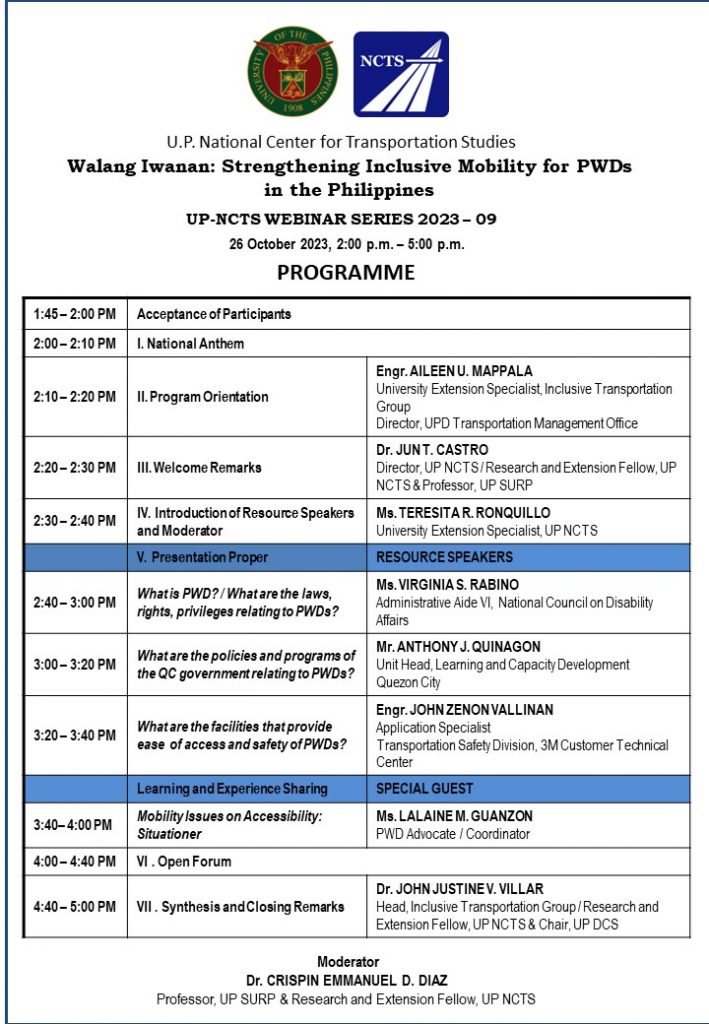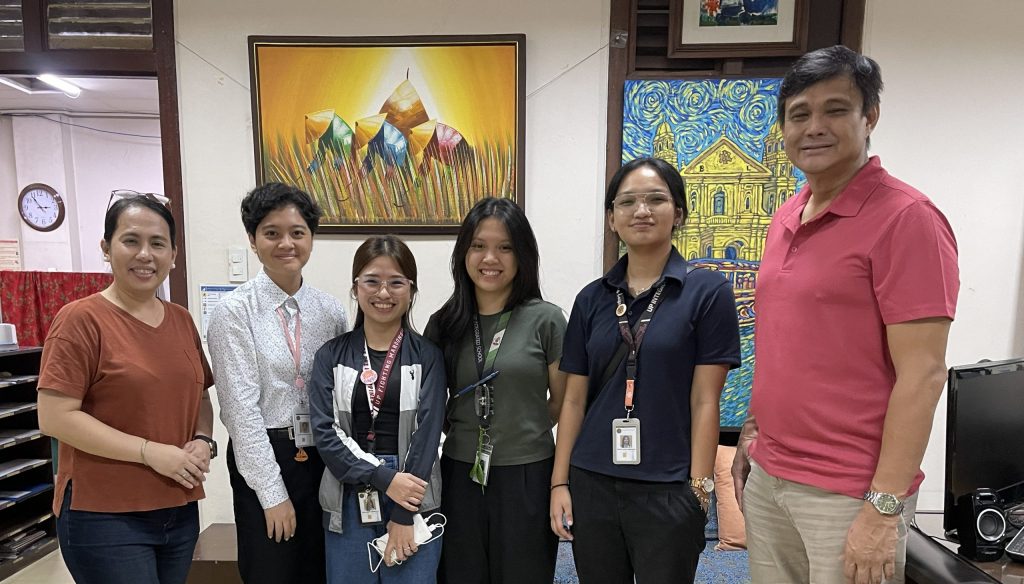October 26, 2023 – 2:00 PM – 5:00 PM
RATIONALE
Persons with disabilities (PWDs), according to the UN Convention on the Rights of Persons With Disabilities, include those who have long-term physical, mental, intellectual or sensory impairments which in interaction with various barriers may hinder their full and effective participation in society on an equal basis with others. However, different transportation vehicles are often not designed for easy access for PWDs. The country’s roads and transport system are far from being PWD-friendly due, in part, to issues of accessibility, but efforts are being made to improve the situation.
Transportation is an extremely important policy issue for those with disabilities. People with disabilities have consistently described how transportation barriers affect their lives in significant ways. Examples of transportation barriers for PWDs include lack of access to accessible or convenient transportation for people who are not able to drive due to vision or cognitive impairments, and public transportation may be unavailable or inconveniently located.
In a 2004 survey, it was reported that inadequate transportation was a problem for them; of those individuals, over half said it was amajor problem. The more severe the disability of the respondent was, the more serious the reported transportation problems (National Organization on Disability-Harris Interactive, 2004).
Transportation problems represent a significant barrier to the mobility and access of those with disabilities. Some people who are willing and able to work cannot do so because of inadequate transportation. Others cannot shop, socialize, enjoy recreational or spiritual activities, or even leave their homes. Additionally, some individuals with disabilities who need medical services must live in institutions due solely to the lack of safe, reliable transportation to needed medical services (NCD, 2005, p. 13).
Significant improvements in the pedestrian network are also required, as pedestrian barriers are the most frequently cited barriers by travelers with disabilities. Implementing pedestrian right-of-way systems to access facilities and destinations is essential. There is a need to develop and maintain accessible and well-lit pedestrian paths while promoting greater enforcement of parking, safety, and security strategies.
We must consider the overarching principle of the Sustainable Development Goals (SDGs), which is “Leave no one behind”. All the targets of the 2030 Agenda are universal, including everybody without exception. The UN Convention on the Rights of Persons with Disabilities (CRPD) is one of the guiding frameworks for the implementation of SDGs, ensuring the inclusion and equal participation of PWDs. These global goals have opened doors to opportunities, participation and recognition for persons with physical and intellectual disabilities.
Quoting from the SDGs, particularly SDG 11: Make cities and human settlements inclusive, safe, resilient and sustainable, stating “The disability-related target of this SDG is to create accessible infrastructure that is affordable. It aims at providing accessible and sustainable transport systems and universal access to safe and inclusive green public spaces. Removing infrastructure barriers can help persons with disabilities in many ways and make them more self-reliant.”
Indeed, there is a need for discussion to address the following questions: (1) what are the types and other concepts relating to PWDs?; (2) what are the laws, policies and programs of the government as well as the local government units relating to PWDs?; (3) what are the facilities that provide ease of access and safety of PWDs?; and (4) what are the issues and challenges of PWDs especially in transport?
OBJECTIVES
This webinar aims to:
- Understand the types and other concepts relating to PWDs;
- Reiterate the different laws for PWDs and their rights and showcase policies and programs of the government as well as the local government units relating to PWDs;
- Enlighten the public about the facilities that provide ease of access and safety of PWDs; and
- Identify issues and challenges of PWDs transport accessibility and mobility, and share their experiences and learnings.




